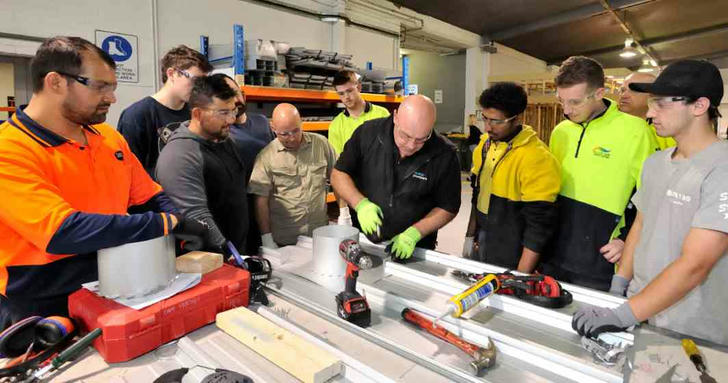Plumbing Apprenticeships: A High-Earning Career Path with Paid Training
Plumbing apprenticeships represent one of the most stable and high-paying trade career paths in the United States.
For those searching for local plumber jobs, the opportunity to earn while learning through paid training programs offers both immediate income and long-term security.

Strong Demand and Reliable Income
According to the U.S. Bureau of Labor Statistics (BLS), plumbers, pipefitters, and steamfitters earned a median annual wage of $62,970 in 2024, with the top 10 percent earning more than $105,150 per year.
These wages make the plumbing field one of the most financially rewarding options within the skilled trades sector.
Even entry-level apprentice plumbers earn competitive pay. After certification, experienced plumbers can reach $30 – $40 per hour, or $50,000 – $80,000 annually, with additional overtime or contract bonuses.
Earn While You Learn: Paid Training Opportunities
Plumbing is one of the few careers where newcomers can earn income while learning on the job.
Across the U.S., Registered Apprenticeship Programs (RAPs) blend classroom instruction with paid, hands-on field training.
| Program Type | Average Pay Range | Key Benefits |
|---|---|---|
| Union Apprenticeships (UA / JATC) | $25 – $49/hour | Paid training hours, tools and tuition support, health coverage. |
| State-Registered Programs (e.g., Oregon BOLI) | $20 – $40/hour | Wage increases with skill level; leads to Journeyman License. |
| Employer-Sponsored Training | $18 – $25/hour | On-the-job mentorship and guaranteed job placement after training. |
Example: The Oregon Bureau of Labor & Industries reports plumbing apprentice wages between $41 – $49/hour in certain local programs, highlighting the strong earning potential of paid apprenticeships.
Government Funding and Subsidies
Several government-backed programs and initiatives make plumbing apprenticeships more accessible and financially supported across the U.S.:
| Program / Agency | Purpose & Coverage | Benefits / Support Provided |
|---|---|---|
| U.S. Department of Labor – Registered Apprenticeship Program | Federal initiative supporting workforce training and trade certification. | Provides employer training reimbursements, wage subsidies, and national credential recognition. |
| Workforce Innovation and Opportunity Act (WIOA) | Administered through local workforce boards to assist job seekers entering high-demand industries. | Offers tuition assistance, training grants, and funded paid training plumbing programs. |
| State & Local Apprenticeship Boards (e.g., Oregon BOLI, California DAS) | State-level agencies regulating apprenticeship standards and funding. | Support regional apprenticeship wages, safety training, and licensing pathways through grants or cost-sharing. |
These programs collectively reduce financial barriers for individuals entering the skilled trades, while ensuring a consistent, government-recognized career structure.
Training and Career Advantages
Plumbing apprenticeships offer several key advantages that make them especially attractive:
No College Degree Required
No Prior Experience Needed
National Certification and Licensing
Career Advancement Opportunities
Consistent Job Availability
Steps to Start a Plumbing Apprenticeship
Locate a Registered Program — Check state directories or [Apprenticeship.gov]for approved plumbing apprenticeships.
Apply and Meet Basic Requirements — Typically 18 years old, high school diploma or equivalent, and physically fit for field work.
Begin Paid On-the-Job Training — Earn hourly wages while learning under licensed professionals.
Complete Coursework — Study building codes, piping systems, and safety practices.
Obtain State License or Journeyperson Certification — This unlocks higher wage levels and supervisory positions.
Conclusion
The BLS projects steady growth in plumbing and pipefitting jobs as new construction and infrastructure maintenance continue nationwide.
Among all skilled trades, plumbing stands out as a path that combines financial growth, government-backed training, and steady demand. Supported by both federal and state workforce initiatives, plumbing apprenticeships remain a practical and high-earning choice in today’s job market.
References
U.S. Bureau of Labor Statistics – Plumbers, Pipefitters, and Steamfitters (2024)
Indeed – Apprentice Plumber Salary Data (2025)
Workforce Innovation and Opportunity Act (WIOA) – Federal Apprenticeship and Training Grants
